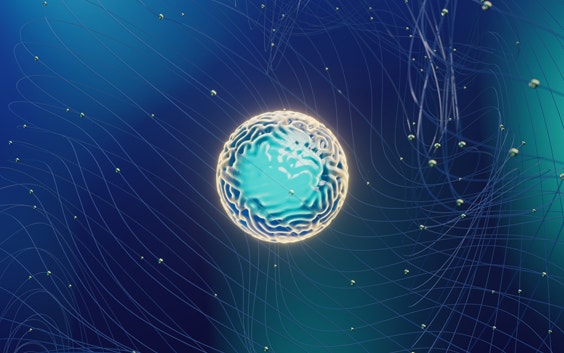
INTERVIEW
Mimics Innovation Awards Winner: Nasim Golafshan
3D-Printed Regenerative Magnesium Phosphate Implant Ensures Stability and Restoration of Hip Dysplasia
What was the dream?
To make surgical treatments for hip dysplasia, one of the main causes of hip osteoarthritis, less invasive and more durable, using a personalized, 3D-printed, regenerative hip implant.
What was the challenge?
Patients with hip dysplasia suffer from an instability of the hip joint due to incomplete bony coverage of the hip socket. Traditional surgical treatments include osteotomizing the hip bone to realign the socket or inserting a bone graft to complete the hip socket's bony structure. These treatments have been associated with complications such as extensive rehabilitation periods and donor site morbidity. Surgeons face complex technical challenges during these procedures when identifying the appropriate osteotomies or bone graft shape and position for their patients, which is crucial for an accurate reconstruction.
Titanium-based 3D-printed implants provide an exciting alternative but have their own challenges regarding integration in the native bone, infections, and loosening. Especially for younger patients, non-resorbable titanium implants are not preferred due to a mismatch of the implant size after patient growth.
What are the results?
To overcome the complications and challenges associated with the surgical treatments listed above, Golafshan et al. developed a novel hip implant. This implant credits its regenerative qualities to its flexible and bone-inducing biomaterial ink. Its osteopromotive properties were demonstrated by means of in vitro cultures using human mesenchymal stem cells. The implant is resorbable, meaning that the material is naturally resorbed by the body over time as new tissue regrows. The mechanical stability and fixation of the implant to the host bone were verified by mechanical tests, which showed that the construct can withstand physiological loads, even after losing approximately 40% of its initial mass. Finally, the implant has a personalized shape based on CT scans. In the future, this will achieve an implant shape and position that, through careful preoperative planning, can provide an extension to the acetabular rim to keep the femoral head in its correct position while still retaining maximal range of motion of the hip joint.
Why this research won
Regenerative medicine is a field that is known for its multidisciplinary nature. However, it is rare to find an article that treats every one of these disciplines with such a high level of attention. Due to their innovative design methods and use of Materialise software, the researchers developed a protocol for personalized devices with special attention to the effect of the internal structure on mechanical stability and the fixation to the host bone. From a mechanical perspective, it provides in-depth insights into the load-bearing requirements and properties, as well as the corresponding mechanical test setups. A careful selection of the bioresorbable material was made, and its safety and performance were verified using biological techniques and state-of-the-art degradation test setups.
The strong evidence presented in this paper leads the way to a new personalized implant that could truly revolutionize the treatment of hip dysplasia and decrease the occurrence of degenerative changes in the hip anatomy, which ultimately lead to the development of osteoarthritis.
You can learn more about the Mimics Innovation Awards here.
L-102994-01
Share on:

Biography
Nasim Golafshan
You might also like
Never miss a story like this. Get curated content delivered straight to your inbox.
